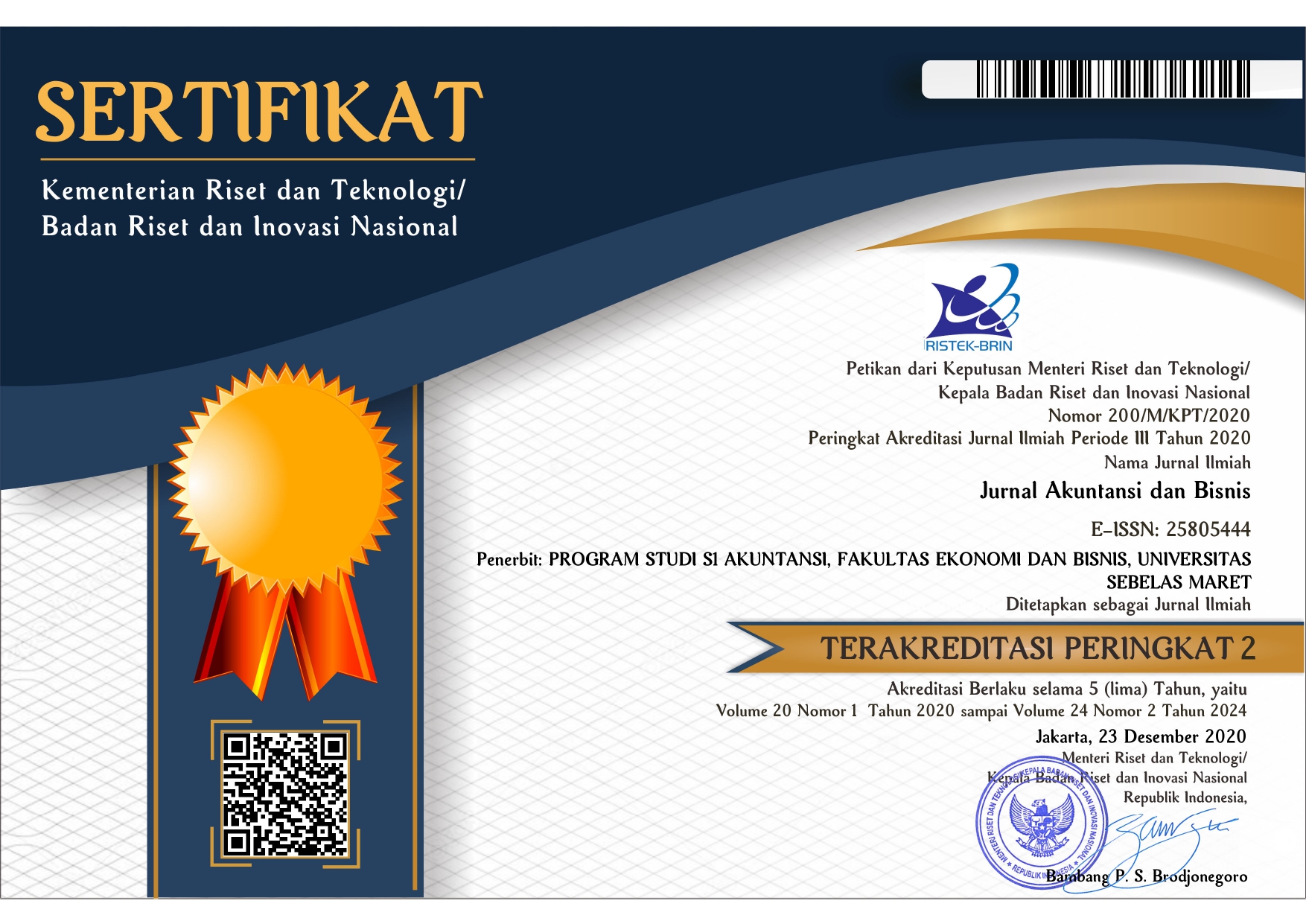Analisis Risiko dalam Penganggaran Modal dan Karakteristik Organisasi yang Mempengaruhinya
Abstract
References
Berg, N.A. 1965. Strategic Planning in Conglomerate Companies. Harvard Bussiness Review, May-June: 79-92.
Bushe R. Gervase and A. B. 1991 . (Rami) Shani, Parallel Learning Structure. Weshley Publishing Company, Inc.
Bromwich, M. and Bhimani,A. 1991. Strategic Investment Appraisal, Management Accounting (UK).
Chenhall, R.H. and Moris, D. 1993. The Impact of Structure, Enviroment and Interdependence on the Perceived Usefullness of Management Accounting Systems. The Accounting Review: 16-35.
Dufesco, R.A., Johnson, R.R. and Zorn, T.S. 1990. The Effect Of Executive Stock Option Plans on Stockholders and Bondholders. The Journal of Finance.
Gordon L.A. and Smith, K.J. 1992. Post-Auditing Capital Expenditure and Firm Performance: The Role of Asymmetric Information, Accounting Organization and Society: 741-758.
Haka, S.F. 1987. Capital Budgeting Techniques and Firm Spesific Contingencies: A Correlation Analysis. Accounting, Organization, and Society: 31-48.
Hirst, M.K. and Baxter, J.A. 1993. A Capital Budgeting Case Study: An Analysis of a Choice Process and Roles of Information. Behavioral Research and Accounting: 187-250.
Ho, S.S.M. and Pike, R.H. 1998. Organizational Characteristic Influencing the Use of Risk Analisis In Strategic Capital Investment. Engineering Economist.
Ho, S.S.M. and Pike, R.H. 1991. Risk Analysis in Capital Budgeting Context: Simple or Sophisticated ?. Accounting and Bussiness Research.
Jae K. Shim and Joel G. Siegel. 1994. Budgeting Basic and Beyond, A Complete Step by Step Guide for Nonfinancial Manager. Prentice Hall.
Kim, S.H. and Farrager, E.J. 1981. Current Capital Budgeting Practices. Management Accounting. June: 26-33.
Miles, R.E. and Snow, C.C. 1978. Organizational Strategy, Structure and Process. New York: McGraw-Hill.
Milliken J. Francis. 1987. Three Types of Perceived Uncertainty about the Enviroment: Stete. Effect and response Uncertainty. Academy of Management Review: 133-143.
Riyanto, Bambang dan Gudono. 1996. An Assesment of The Impact of Compensation Plans on Stock Market Return. Kelola: 41-53.
Santoso, Singgih. 1999. SPSS Mengolah Data Statistik secara professiona. PT Gramedia. Jakarta.
Schall, L.D. and Sundem, G.L. 1985. Capital Budgeting Methods and Risk: A further Analysis. Financial Management: 7-13.
DOI: http://dx.doi.org/10.20961/jab.v6i2.48
Jurnal Akuntansi dan Bisnis (JAB)
ISSN 1412-0852 (print), 2580-5444 (online)
Published by Accounting Study Program, Faculty of Economics and Business, Universitas Sebelas Maret, Indonesia

JAB on http://jab.fe.uns.ac.id/index.php/jab is licensed under a Creative Commons Attribution-ShareAlike 4.0 International License










